HT Instruments HT7005 Handleiding
HT Instruments
Meetapparatuur
HT7005
Bekijk gratis de handleiding van HT Instruments HT7005 (5 pagina’s), behorend tot de categorie Meetapparatuur. Deze gids werd als nuttig beoordeeld door 38 mensen en kreeg gemiddeld 3.7 sterren uit 19.5 reviews. Heb je een vraag over HT Instruments HT7005 of wil je andere gebruikers van dit product iets vragen? Stel een vraag
Pagina 1/5

HT7005
MANUALE D’USO
1. PRECAUZIONI E MISURE DI SICUREZZA
Lo strumento è stato progettato in conformità alla direttiva
IEC/EN61010-1, relativa agli strumenti di misura elettronici. Per la
Sua sicurezza e per evitare di danneggiare lo strumento, La
preghiamo di seguire le procedure descritte nel presente manuale e
di leggere con particolare attenzione tutte le note precedute dal
simbolo
ATTENZIONE
Non effettuare misure in ambienti umidi
Non effettuare misure in presenza di gas o
materiali esplosivi, combustibili o in ambienti
polverosi
Evitare contatti con il circuito in esame se non
si stanno effettuando misure
Evitare contatti con parti metalliche esposte,
con terminali di misura inutilizzati, circuiti, ecc
Non effettuare alcuna misura qualora si
riscontrino anomalie nello strumento come,
deformazioni, rotture, fuoriuscite di sostanze,
assenza di visualizzazione sul display, ecc
Prestare particolare attenzione quando si
effettuano misure su circuiti con tensioni
superiori a 20V in quanto è presente il rischio di
shock elettrici
Nel presente manuale e sullo strumento sono utilizzati i seguenti
simboli:
Attenzione: attenersi alle istruzioni riportate nel
manuale; un uso improprio potrebbe causare danni
allo strumento o ai suoi componenti.
Strumento con doppio isolamento
Lo strumento può operare su conduttori nudi sotto
tensione
Corrente AC e DC
Riferimento di terra
ATTENZIONE: il simbolo riportato sullo strumento
indica che l'apparecchiatura, i suoi accessori e le
batterie devono essere raccolti separatamente e
trattati in modo corretto
1.1 Istruzioni preliminari
ATTENZIONE
Questo strumento è stato progettato per un
utilizzo in un ambiente con livello di
inquinamento 2
Può essere utilizzato per misure di
CORRENTE AC e DC su installazioni in CAT
III 300V
Non effettuare misure su circuiti che superano i
limiti di tensione specificati
Non effettuare misure in condizione ambientali
al di fuori delle limitazioni indicate nel § 11.2
Controllare se la batteria è inserita
correttamente
Quando lo strumento è connesso al circuito in
esame non toccare mai un qualunque
terminale inutilizzato
Se, durante una misura, il valore o il segno
della grandezza in esame rimangono costanti
controllare se è attivata la funzione HOLD
1.2 Definizione di categoria di sovratensione
In accordo alla norma IEC/EN61010-1 i circuiti sono suddivisi nelle
seguenti categorie di misura:
La CAT IV serve per le misure effettuate su una sorgente di
un’installazione a bassa tensione
Esempi sono costituiti da contatori elettrici e da misure sui
dispositivi primari di protezione dalle sovracorrenti e sulle unità di
regolazione dell’ondulazione
La CAT III serve per le misure effettuate in installazioni all’interno
di edifici
Esempi sono costituiti da misure su pannelli di distribuzione,
disgiuntori, cablaggi, compresi i cavi, le barre, le scatole di
giunzione, gli interruttori, le prese di installazioni fisse e gli
apparecchi destinati all’impiego industriale e altre
apparecchiature, per esempio i motori fissi con collegamento ad
impianto fisso
La CAT II serve per le misure effettuate su circuiti collegati
direttamente all’installazione a bassa tensione
Esempi sono costituiti da misure su apparecchiature per uso
domestico, utensili portatili ed apparecchi similari
La CAT I serve per le misure effettuate su circuiti non collegati
direttamente alla RETE DI DISTRIBUZIONE
Esempi sono costituiti da misure su non derivati dalla RETE e
derivati dalla RETE ma con protezione particolare (interna). In
quest’ultimo caso le sollecitazioni da transitori sono variabili, per
questo motivo (OMISSIS) si richiede che l’utente conosca la
capacità di tenuta ai transitori dell’apparecchiatura
2. DESCRIZIONE GENERALE
Lo strumento consente le seguenti funzioni:
Misura Corrente DC/AC TRMS fino a 400A in Autorange
Misura corrente di spunto (INRUSH)
Funzioni Data HOLD e Zero
Backlight
Rilevazione Tensione AC senza contatto
Auto Power OFF
La grandezza selezionata appare sul display LCD con indicazioni
dell’unità di misura e delle funzioni abilitate. Lo strumento è
inoltre dotato di un dispositivo di Auto Power OFF che provvede a
spegnere automaticamente lo strumento trascorsi circa 15 minuti
dall'ultima pressione dei tasti funzione
3. PREPARAZIONE ALL’UTILIZZO
3.1 Controlli iniziali
Lo strumento, prima di essere spedito, è stato controllato dal
punto di vista elettrico e meccanico. Sono state prese tutte le
precauzioni possibili affinché lo strumento potesse essere
consegnato senza danni.
Tuttavia si consiglia, comunque, di controllare sommariamente lo
strumento per accertare eventuali danni subiti durante il trasporto.
Se si dovessero riscontrare anomalie contattare immediatamente
lo spedizioniere.
Si consiglia inoltre di controllare che l’imballaggio contenga tutte
le parti indicate al § 11.2. In caso di discrepanze contattare il
rivenditore. Qualora fosse necessario restituire lo strumento, si
prega di seguire le istruzioni riportate al § 12
3.2 Alimentazione dello strumento
Lo strumento è alimentato tramite 2x1.5V batterie tipo AAA IEC
LR03. Quando le batterie sono scarica appare il simbolo "
" a
display. Per sostituire le batterie seguire le istruzioni riportate al §
8
3.4 Conservazione
Per garantire misure precise, dopo un lungo periodo di
immagazzinamento in condizioni ambientali estreme, attendere
che lo strumento ritorni alle condizioni normali (vedere le
specifiche ambientali elencate al § 11.2
4. DESCRIZIONE DELLO STRUMENTO E DEL DISPLAY
5. RIFERIMENTO DI SICUREZZA
Per ottenere le caratteristiche di precisione dichiarate per lo
strumento, posizionare sempre il conduttore il più possibile al centro
del toroide (considerare le tacche di allineamento) e tenere la mano
al di sotto del riferimento di sicurezza (vedere figura seguente)
Copyright HT ITALIA 2017 Versione IT 1.00 - 27/02/2017
6. DESCRIZIONE DEI TASTI FUNZIONE
6.1 Tasto
La pressione del tasto
permette di accendere lo strumento.
Tenere premuto il tasto per 1s al fine di spegnere lo strumento
6.2 Tasto DH/
La pressione del tasto DH/
attiva il mantenimento del valore
della grandezza visualizzata a display. Conseguentemente alla
pressione di tale tasto il simbolo "H" appare a display. Premere
nuovamente il tasto per uscire dalla funzione. La pressione
prolungata del tasto DH/
attiva/disattiva la retroilluminazione del
display
6.3 Tasto MODE
Il tasto MODE permette la selezione del tipo di misura della
corrente. I simboli “AC” e “DC” sono mostrati a display
6.4 Tasto ZERO
Il tasto ZERO, attivo solo nella misura di corrente DC, consente di
attivare/disattivare l’azzeramento del valore a display al fine di
annullare la magnetizzazione residua (vedere § 7.1). Il simbolo
“
” è mostrato a display
6.5 Tasto INRUSH
Il tasto INRUSH, attivo solo nella misura di corrente AC, consente
di attivare/disattivare la misura della corrente di spunto (picchi di
corrente istantanei) di un impianto. Il simbolo “INRUSH” è
mostrato a display e la portata selezionata è 400A. La pressione
prolungata del tasto INRUSH permette di modificare la portata a
40A
6.6 Rilevazione tensione AC senza contatto
1. Accendere lo strumento con il tasto
2. Avvicinare il sensore NCV (vedere figura) alla sorgente AC
3. L’accensione del LED rosso indica presenza di tensione
6.7 Funzione Auto Power OFF
Al fine di preservare la batteria interna, lo strumento si spegne
automaticamente dopo circa 15 minuti di non utilizzo. Il simbolo
“
” appare a display ad indicare la presenza della funzione.
7. ESECUZIONE DELLE MISURE
7.1 Misura di Corrente AC e DC
ATTENZIONE
Per ottenere le caratteristiche di precisione
dichiarate per lo strumento posizionare sempre
il conduttore il più possibile al centro del toroide
Quando si applica o rimuove lo strumento da
conduttori nudi sotto tensione, nel caso in cui
non sia possibile togliere tensione, utilizzare
opportune misure di sicurezza (ex: guanti
protettivi) al fine di evitare pericolosi shock
elettrici per l’operatore e il danneggiamento
dello strumento
Scollegare la tensione del circuito o indossare
guanti protettivi prima di eseguire la misura
Tenere la mano al di sotto del riferimento di
sicurezza durante la misura (vedere § 5)
1. Premere il tasto per accendere lo strumento
2. Premere il tasto MODE per selezionare la misura AC o DC
3. In caso di misura di corrente DC premere il tasto ZERO per
eliminare la magnetizzazione residua
4. Aprire il toroide ed inserire il cavo di fase al centro del medesimo
(vedere figura – parte sinistra). Prestare attenzione alla polarità
in caso di misura di corrente DC
5. Non eseguire misure con più cavi inseriti all’interno del toroide
(vedere figura – parte destra)
6. Il valore della corrente AC o DC è mostrato a display
7. Il messaggio "OL" indica che il valore di corrente eccede il valore
massimo misurabile
8. Per l’uso delle funzioni Data HOLD e INRUSH vedere i § 6.2 e
6.5
8. SOSTITUZIONE BATTERIA
Quando sul display appare il simbolo "
" occorre sostituire la
batteria.
ATTENZIONE
Solo tecnici esperti possono effettuare questa
operazione. Prima di effettuare questa operazione
assicurarsi di aver rimosso il cavo in esame
dall’interno del toroide
1. Spegnere lo strumento con il tasto
2. Svitare la vite di fissaggio del vano batteria e rimuoverlo
3. Rimuovere le batterie e sostituirle con nuove dello stesso tipo
(vedere § 11.2) rispettando le polarità indicate
4. Riposizionare il coperchio del vano batteria
5. Non disperdere nell’ambiente la batteria utilizzate. Usare gli
appositi contenitori per lo smaltimento
9. PULIZIA DELLO STRUMENTO
Per la pulizia dello strumento utilizzare un panno morbido e asciutto.
Non usare mai panni umidi, solventi, acqua, ecc.
10. FINE VITA
ATTENZIONE: il simbolo riportato sullo strumento
indica che l'apparecchiatura, i suoi accessori e le
batterie devono essere raccolti separatamente e
trattati in modo corretto
11. SPECIFICHE TECNICHE
11.1 Caratteristiche tecniche
Incertezza dichiarata alla temperatura: 23°C 5°C, <80%RH
Corrente DC/AC TRMS
Per forme d’onda non sinusoidali il campo di frequenza è: 50Hz ÷60Hz
Protezione da sovraccarichi: 400A AC
Campo misura INRUSH (40A): 3A ÷ 40A, 50/60Hz, Incertezza: 10%lett.
Campo misura INRUSH (400A):10A ÷ 400A, 50/60Hz, Incertezza: 10%lett.
Tempo di risposta INRUSH: 100ms
11.2 Caratteristiche generali
Normative di riferimento
Sicurezza: IEC/EN61010-1, EMC: IEC/EN61326-1
Categoria di misura: CAT III 300V
Grado di inquinamento: 2, Isolamento: doppio isolamento
Max altitudine di utilizzo: 2000m
Protezione meccanica: IP30
Conformità a direttiva 2014/30/EU (EMC) e 2014/35/EU (LVD)
Display
Caratteristiche: LCD, 3 ¾ cifre, 4000 punti + punto decimale
Tipo di conversione: TRMS
Frequenza di campionamento: 3 volte/s
Indicazione fuori scala: simbolo “OL” a display
Tensione AC senza contatto: 200V ÷ 1000V, 50/60Hz
Alimentazione
Tipo batteria: 2x1.5V batteria tipo AAA IEC LR03
Autonomia: ca 85h (con backlight), ca 240h (senza backlight)
Indicazione batteria scarica: simbolo “
” a display
Auto Power OFF: dopo circa 12 minuti di non utilizzo
Condizioni ambientali di utilizzo
Temperatura di lavoro: 5 40°C, <80%RH
Temperatura di conservazione: -20 60°C; <80%RH
Caratteristiche meccaniche
Dimensioni (LxLaxH): 155x60x25mm
Peso (con batterie): 140g
Max diametro cavo pinzabile: 20mm
Accessori in dotazione
Batterie
Borsa per trasporto
Manuale d’uso
Campo misura Risoluzione Frequenza Incertezza
40.00A AC 0.01A
50Hz60Hz
(2.5%lettura+10cifre)
400.0A AC 0.1A
(2.8%lettura+8cifre)
40.00A AC 0.01A
60Hz400Hz
(2.8%lettura+10cifre)
400.0A AC 0.1A
(2.8%lettura+8cifre)
40.00A DC 0.01A
DC
(2.5%lettura+10cifre)
400.0A DC 0.1A
(2.8%lettura+8cifre)
12. ASSISTENZA
12.1 Condizioni di garanzia
Questo strumento è garantito contro ogni difetto di materiale e
fabbricazione, in conformità con le condizioni generali di vendita.
Durante il periodo di garanzia, le parti difettose possono essere
sostituite, ma il costruttore si riserva il diritto di riparare ovvero
sostituire il prodotto.
La garanzia non è applicata nei seguenti casi:
Riparazione e/o sostituzione accessori e batteria (non coperti da
garanzia)
Riparazioni che si rendono necessarie a causa di un errato
utilizzo dello strumento o del suo utilizzo con apparecchiature
non compatibili.
Riparazioni che si rendono necessarie a causa di un imballaggio
non adeguato.
Riparazioni che si rendono necessarie a causa di interventi
eseguiti da personale non autorizzato.
Modifiche apportate allo strumento senza esplicita autorizzazione
del costruttore.
Utilizzo non contemplato nelle specifiche dello strumento o nel
manuale d’uso.
12.2 Assistenza
Se lo strumento non funziona correttamente, prima di contattare il
Servizio di Assistenza, controllare lo stato della batteria e sostituirla
se necessario. Se lo strumento continua a manifestare
malfunzionamenti controllare se la procedura di utilizzo dello stesso
è conforme a quanto indicato nel presente manuale. Qualora lo
strumento debba essere restituito al servizio post - vendita o ad un
rivenditore, il trasporto è a carico del Cliente. La spedizione dovrà, in
ogni caso, essere preventivamente concordata. Allegata alla
spedizione deve essere sempre inserita una nota esplicativa circa le
motivazioni dell’invio dello strumento. Per la spedizione utilizzare
solo l’imballaggio originale; ogni danno causato dall’utilizzo di
imballaggi non originali verrà addebitato al Cliente.
HT ITALIA SRL
Via della Boaria, 40
48018 – Faenza (RA) – ITALY
Tel: +39-0546-621002
Fax: +39-0546-621144
Web: www.ht-instruments.com
Email: ht@htitalia.it
ITA

HT7005
USER MANUAL
1. PRECAUTIONS AND SAFETY MEASUREMENTS
This instrument complies with safety Standard IEC/EN61010-1
related to electronic measuring instruments. For your own safety and
to avoid damaging the instrument follow the procedures described in
this instruction manual and read carefully all notes preceded by this
symbol
CAUTION
Avoid measuring in humid or wet places
Avoid measuring in rooms where explosive
gas, combustible gas, steam or excessive dust
is present
Keep you insulated from the object under test
Do not touch exposed metal parts such as test
lead ends, sockets, fixing objects, circuits etc.
Avoid doing that if you notice anomalous
conditions such as breakages, deformations,
fractures, leakages of battery fluid, blind display
etc.
Be careful when measuring on circuits with
voltages exceeding 20V to avoid risks of
electrical shock
The following symbols are used in user manual and on the meter:
CAUTION - refer to the instruction manual - an
improper use may damage the instrument or its
components
Double insulated meter
This symbol indicates that the clamp can operate on
live conductors
AC and DC current
Ground reference
CAUTION: this symbol indicates that equipment, its
accessories and battery shall be subject to a
separate collection and correct disposal
1.1 Preliminary instructions
CAUTION
This instrument has been designed for use in
environments with pollution degree 2
It can be used for AC and DC CURRENT
measurements on installations with
measurement category CAT III 300V
Do not test or connect to any circuit exceeding
the specified overload protection
Do not effect measurements under
environmental conditions exceeding the limits
indicated in § 11.2
Make sure that battery is properly installed
When the instrument is connected to
measuring circuits never touch any unused
terminal
If during measurement the displayed values
remain constant check whether the HOLD
function is active
1.2 Measuring overvoltage category definitions
According to the IEC/EN61010-1 guidelines the circuits are divided
into the following measurement categories:
CAT IV is for measurements performed at the source of the low-
voltage installation
Examples are electricity meters and measurements on primary
overcurrent protection devices and ripple control units
CAT III is for measurements performed in the building installation
Examples are measurements on distribution boards, circuit
breakers, wiring, including cables, bus-bars, junction boxes,
switches, socket-outlets in the fixed installation, and equipment
for industrial use and some other equipment, for example,
stationary motors with permanent connection to fixed installation
CAT II is for measurements performed on circuits directly
connected to the low voltage installation
Examples are measurements on household appliances, portable
tools and similar equipment
CAT I is for measurements performed on circuits not directly
connected to MAINS
Examples are measurements on circuits not derived from
MAINS, and specially protected (internal) MAINS-derived circuits.
In the latter case, transient stresses are variable; for that reason,
the standard requires that the transient withstand capability of the
equipment is made known to the user
2. GENERAL DESCRIPTION
The instrument has the following features:
DC/AC TRMS Current measurement up to 400A in Autorange
Inrush current measurement
Data HOLD and ZERO features
Backlight
Detection of AC Voltage without contact
Auto Power OFF
The selected quantity is displayed with indication of measuring
unit and active functions. The instrument is provided with an Auto
Power Off function consisting in an automatic switching off 15
minutes after last pressure on keys.
3. PREPARATION FOR USE
3.1 Initial checks
This instrument was checked both mechanically and electrically
prior to shipment. All possible cares and precautions were taken
to let you receive the instrument under perfect conditions.
Notwithstanding we suggest you to check it rapidly (any damage
may have occurred during transport – if so please contact the
local distributor from whom you bought the item).
Make sure that all standard accessories mentioned in § 11.2 are
included. Should you have to return back the instrument for any
reason please follow the instructions mentioned in § 12
3.2 Supply voltage
The instrument is powered by 2x1.5V battery type AAA IEC LR03
included on meter. When battery is low the symbol "
"is
displayed. To replace/insert the batteries follow the instructions
indicated in § 8
3.4 Storage
After a period of storage under extreme environmental conditions
exceeding the limits mentioned in § 11.2 let the instrument
resume normal operating conditions before using it
4. INSTRUMENT AND DISPLAY DESCRIPTION
5. SAFETY LINE
Put the cable as close as possible to the middle of the jaws
(considering the alignment marks) in order to meet the meter
accuracy specifications and take the hand under the safety line (see
below figure)
Copyright HT ITALIA 2017 Release EN 1.00 - 27/02/2017
6. FUNCTION KEYS DESCRIPTION
6.1
key
Press
key to switch on the instrument. Press and hold the key
to switch off the instrument
6.2 DH/
key
By pressing DH/
key the measured value is hold on the display
where the symbol "H" appear. Press again the key to disable this
function and resume normal operation. Press and hold the
DH/
key to activate/deactivate the display backlight
6.3 MODE key
The MODE key allows the selection of the type of current
measurement. The “AC” and “DC” symbols are shown at display
6.4 ZERO key
The ZERO key, which is active only in DC current measurement,
allows to activate/deactivate the zeroing of value at display in
order to remove the residual magnetization (see § 7.1) ). The “
”
symbol is shown at display
6.5 INRUSH key
The INRUSH key, which is active only in AC current measurement,
allows to activate/deactivate the Inrush current measurement
(instantaneous current peaks) of a installation. The “INRUSH”
symbol is shown at display and the 400A range is automatically
selected. Press and hold the INRUSH key to select the 40A range.
Press INRUSH key again to exit by the function
6.6 Detection of AC Voltage without contact
1. Switch on the instrument with
key
2. Move the NCV sensor (see figure) close to AC source
3. The switch on of red LED indicate the voltage presence
6.7 Auto Power OFF feature
In order to preserve internal batteries, the instrument switches
automatically off approximately 15 minutes after it was last used.
The “
” symbol appears on the display when this function is
active
7. HOW TO PERFORM THE MEASUREMENTS
7.1 DC and AC Current measurement
CAUTION
Put the conductor as close as possible to the
middle of the jaws in order to meet the meter
accuracy specifications
When apply/remove the instrument on/from live
conductors, if is not possible to de-energize the
circuit on test, use appropriate security
measures (e.g. protective gloves) to avoid
dangerous electric shock for the operator and a
possible damage of the instrument
Disconnect the main voltage or wear protective
gloves before performing measurement
Put the hand below the safety line during the
measurement as indicated in § 5
1. Switch on the instrument by pressing key
2. Press MODE key to select AC or DC measurement
3. For DC current measurement press the ZERO key in order to
remove the residual magnetization
4. Open the clamp jaw and insert the cable in the middle of it (see
figure – left part). Take care to the polarity for DC current
measurement
5. Do not perform measurements with more cables included in the
clamp jaw (see figure – right part)
6. The AC or DC current value will be shown on the display
7. If the message "OL" is displayed the maximum current value was
exceeded
8. For Data HOLD and INRUSH features see § 6.2 and § 6.5
8. BATTERY REPLACEMENT
When the "
" low battery indication is displayed the battery must
be replaced.
CAUTION
Only expert technicians should perform this operation.
Before carrying out this operation, make sure you
have removed the cable being tested from inside the
clamp jaw
1. Switch off the instrument by pressing
key
2. Remove the fixing screw and the battery compartment cover
3. Remove the batteries and replace them with new one of the same
type (see § 11.2) by respecting the correct polarity
4. Replace battery compartment cover
5. Do not scatter old batteries into the environment. Use the relevant
containers for disposal
9. CLEANING THE INSTRUMENT
Use a soft and dry cloth to clean the instrument. Never use wet cloths,
solvents, water, etc.
10. END OF LIFE
CAUTION: this symbol indicates that equipment, its
accessories and battery shall be subject to a
separate collection and correct disposal
11. TECHNICAL SPECIFICATIONS
11.1 Technical characteristics
Accuracy declared at temperature: 23°C 5°C, <80%RH
DC/AC TRMS Current
For not sinusoidal waveforms the frequency range is: 50Hz ÷60Hz
Overload protection: 400A AC
INRUSH current 40A range: 3A ÷ 40A, 50/60Hz, Accuracy: 10%rdg
INRUSH current 400A range:10A ÷ 400A, 50/60Hz, Accuracy: 10%rdg
INRUSH current response time: 100ms
11.2 General specifications
Reference guidelines
Safety: IEC/EN61010-1, EMC: IEC/EN61326-1
Measurement category: CAT III 300V
Pollution degree: 2, Insulation: double insulation
Max height of use: 2000m (6562ft)
Mechanical protection: IP30
Compliance with 2014/30/EU (EMC) and 2014/35/EU (LVD)
Display
Characteristics: LCD, 3 ¾dgt, 4000 points + decimal point
Conversion type: TRMS
Sampling rate: 3 times/s
Over range indication: “OL” symbol at display
Power supply
Battery type: 2x1.5V battery type AAA IEC LR03
Battery life: ca 85h (with backlight), ca 240h (without backlight)
Low battery indication: symbol “
” at display
Auto Power OFF: after 15 minutes of idleness
Environmental conditions for use
Working temp.: 540°C (41°F 104°F), <80%RH
Storage temperature: -20 60°C (-4°F 140°F), <80%RH
Mechanical characteristics
Dimensions (L x W x H): 155x60x25mm (6x2x1in)
Weight (with batteries): 140g (5 ounces)
Max diameter cable: 20mm (1in)
Standard accessories
Batteries
Carrying case
User manual
Range Resolution Frequency Accuracy
40.00A AC 0.01A
50Hz60Hz
(2.5%rdg+10dgt)
400.0A AC 0.1A
(2.8%rdg+8dgt)
40.00A AC 0.01A
60Hz400Hz
(2.8%rdg+10dgt)
400.0A AC 0.1A
(2.8%rdg+8dgt)
40.00A DC 0.01A
DC
(2.5%rdg+10dgt)
400.0A DC 0.1A
(2.8%rdg+8dgt)
12. SERVICE
12.1 Warranty conditions
This instrument is guaranteed for one year against material or
production defects, in accordance with our general sales conditions.
During the warranty period the manufacturer reserves the right to
decide either to repair or replace the product.
The warranty shall not apply in the following cases:
Repair and/or replacement of accessories and battery (not
covered by warranty).
Repairs that may become necessary as a consequence of an
incorrect use of the instrument or due to its use together with
non-compatible appliances.
Repairs that may become necessary as a consequence of
improper packaging.
Repairs which may become necessary as a consequence of
interventions performed by unauthorized personnel.
Modifications to the instrument performed without the
manufacturer’s explicit authorization
Use not provided for in the instrument’s specifications or in the
instruction manual
12.2 Service
Should the instrument not work properly, make sure that battery is
correctly installed and working and replace if necessary before
contacting your distributor. Should you need for any reason to return
back the instrument for repair or replacement take prior agreements
with the local distributor from whom you bought it. Do not forget to
enclose a report describing the reasons for returning (detected fault).
Use only original packaging. Any damage occurred in transit due to
not original packaging will be charged anyhow to the customer. The
manufacturer will not be responsible for any damage to persons or
things
HT ITALIA SRL
Via della Boaria, 40
48018 – Faenza (RA) – ITALY
Tel: +39-0546-621002
Fax: +39-0546-621144
Web: www.ht-instruments.com
Email: ht@htitalia.it
ENG
Product specificaties
| Merk: | HT Instruments |
| Categorie: | Meetapparatuur |
| Model: | HT7005 |
Heb je hulp nodig?
Als je hulp nodig hebt met HT Instruments HT7005 stel dan hieronder een vraag en andere gebruikers zullen je antwoorden
Handleiding Meetapparatuur HT Instruments

19 November 2024

27 Maart 2024

27 Maart 2024

27 Maart 2024
Handleiding Meetapparatuur
- Oricom
- Chauvin Arnoux
- Victron Energy
- AREXX
- ORNO
- Black Decker
- GMW
- Smart365
- Elgato
- Murideo
- Mitutoyo
- CEM
- Holzmann
- DriveTest
- Phoenix Contact
Nieuwste handleidingen voor Meetapparatuur
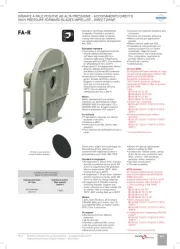
16 September 2025
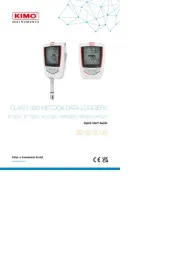
16 September 2025
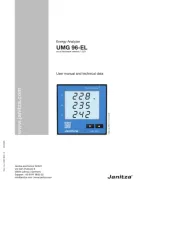
16 September 2025
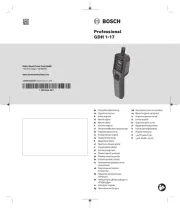
15 September 2025
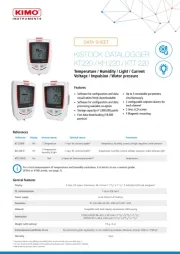
15 September 2025
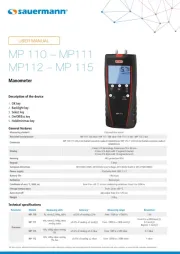
15 September 2025
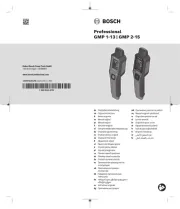
15 September 2025
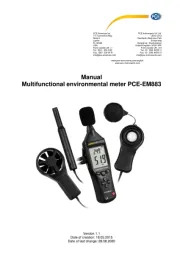
15 September 2025
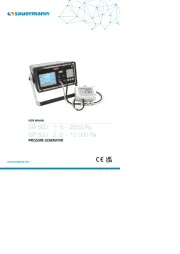
15 September 2025
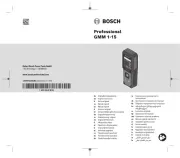
15 September 2025